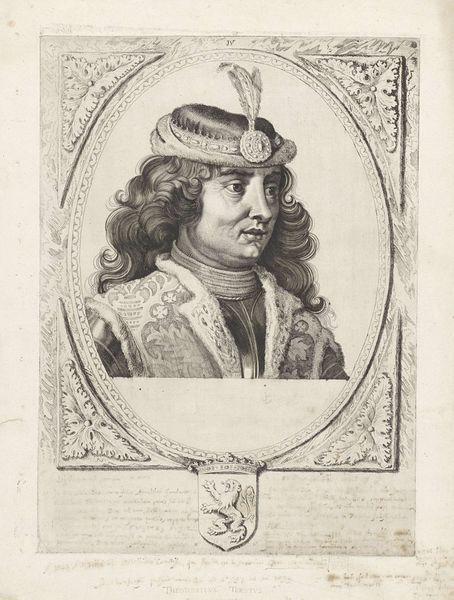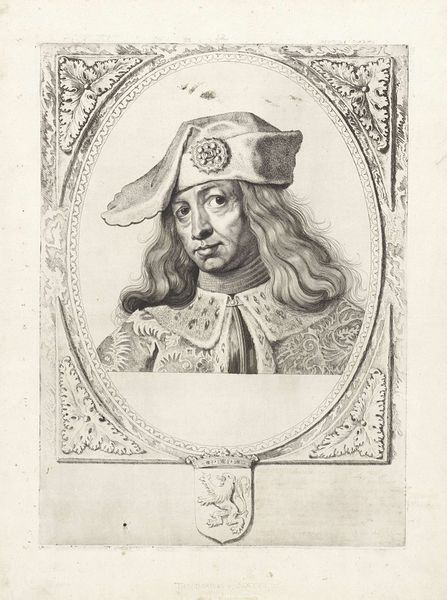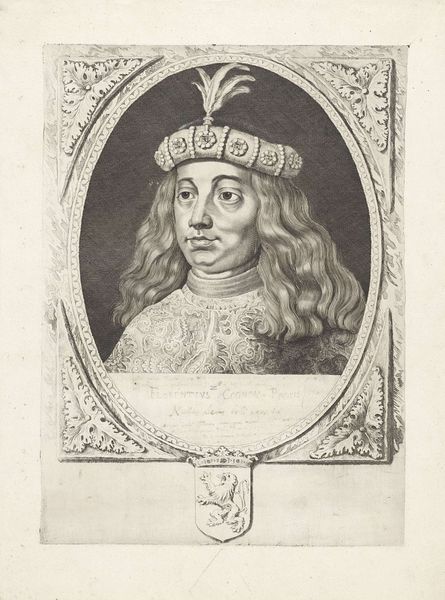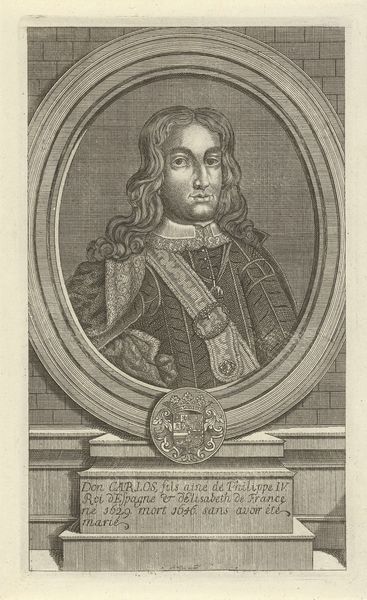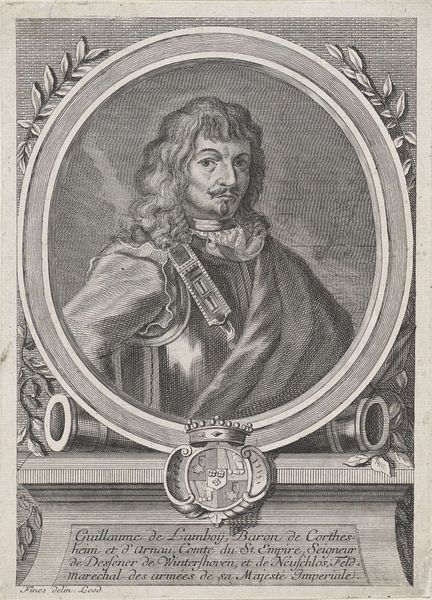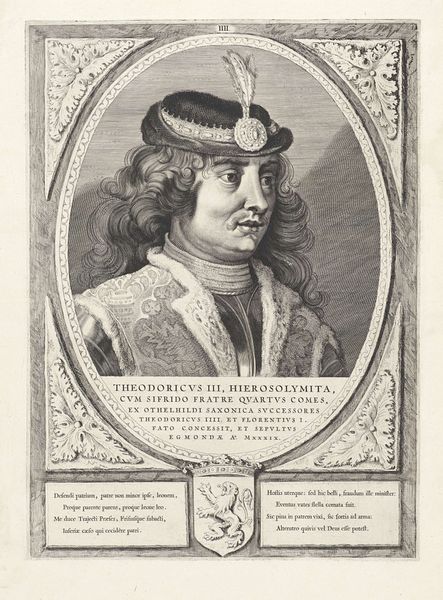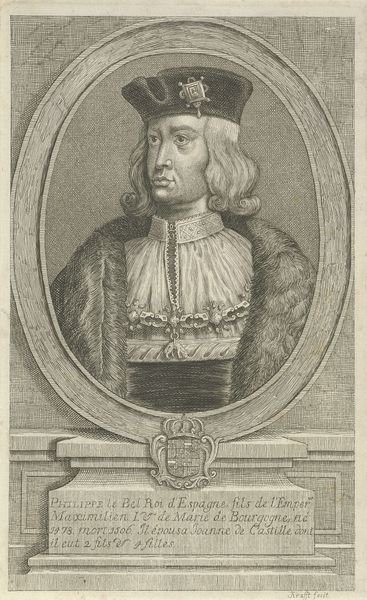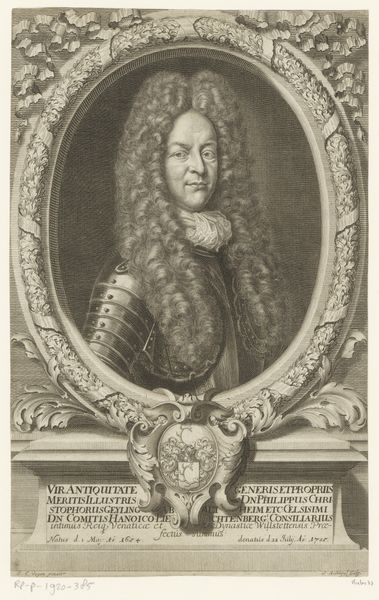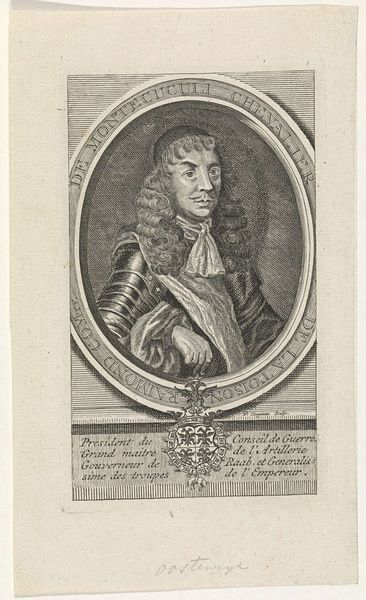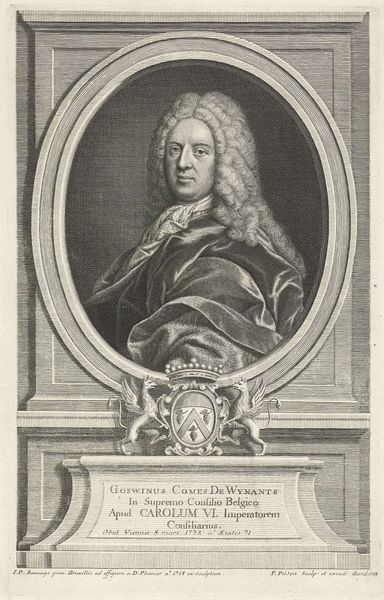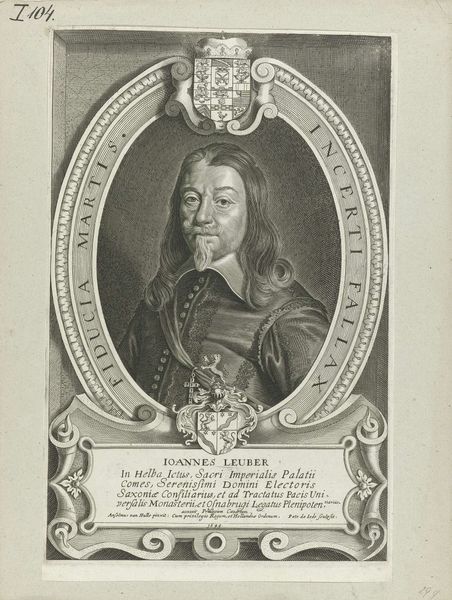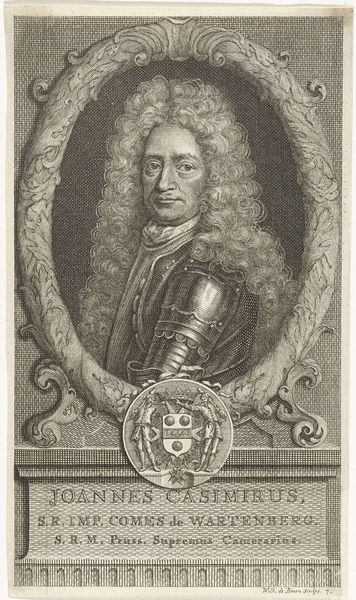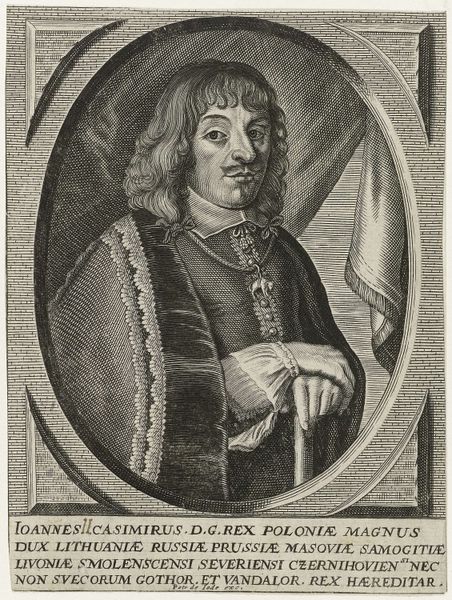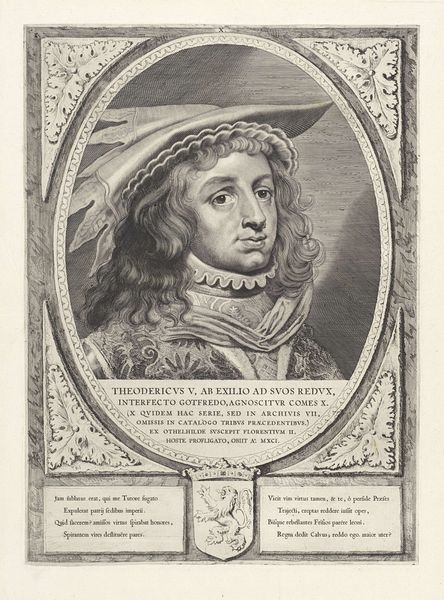
print, engraving
#
portrait
#
baroque
#
dutch-golden-age
# print
#
old engraving style
#
figuration
#
pencil drawing
#
line
#
sketchbook drawing
#
engraving
Dimensions: height 404 mm, width 294 mm
Copyright: Rijks Museum: Open Domain
Curator: Welcome to the Rijksmuseum. Here, we see a piece entitled "Portret van Dirk V, graaf van Holland," a work from around 1650 attributed to Cornelis Visscher. It is an engraving. Editor: Hmm, my first impression is that it feels incredibly ornate, almost theatrical. There is so much detail crammed in, like everyone wanted to flaunt their importance through the artwork. Curator: That’s a astute observation, especially considering the era. This portrait needs to be examined within the framework of Dutch Golden Age portraiture, which, as you subtly suggested, was inextricably linked to class and the rising mercantile power structures in Dutch society. Visscher depicts Dirk V, but not in a vacuum; he's asserting status through the visual language of power. Editor: The seriousness of the man almost feels at odds with the playfulness of the surrounding design—all those leaves and flourishes in the border are tickling him or something. Curator: It's precisely that tension which speaks to the complexity of the time. We see an adoption of baroque sensibilities blended with the austerity often associated with Dutch Protestantism. Dirk V is long deceased by 1650; how then should we frame the contemporary implications of Visscher reviving his image and name? How are artists influenced to performatively construct the past to serve social functions in the present? Editor: The artist creates a certain feeling even as he or she is replicating existing tropes of representation, that's an intriguing thought to play with! The starkness of the black and white and the very formal rendering also invite speculation. In a way, I want to make it messy—add a bit of watercolor or a chaotic collage just to shake things up. Curator: Indeed. That response is understandable as a rebellion against established power. Your creative impulses underscore the dynamic between honoring historical representation and actively challenging inherited narratives about power, class, and identity. What do we choose to leave behind? What is worth memorializing, and for whose benefit? Editor: These old portraits are like jumping-off points. Starting with these, how do we go about redefining history from where we stand right now? Curator: An excellent provocation. I invite listeners to continue contemplating how artists and audiences are bound within ever-evolving socio-political dialogues as they move to the next artwork.
Comments
No comments
Be the first to comment and join the conversation on the ultimate creative platform.
